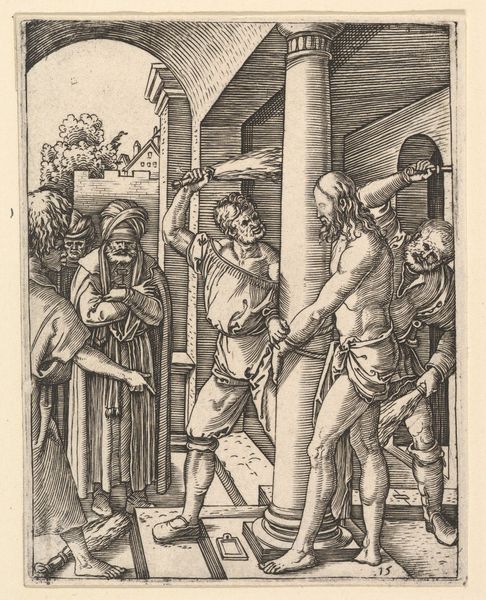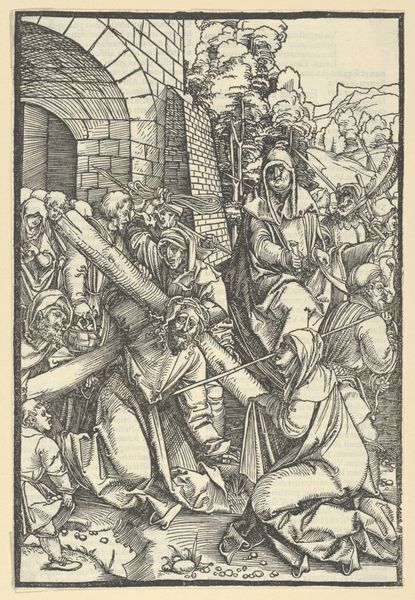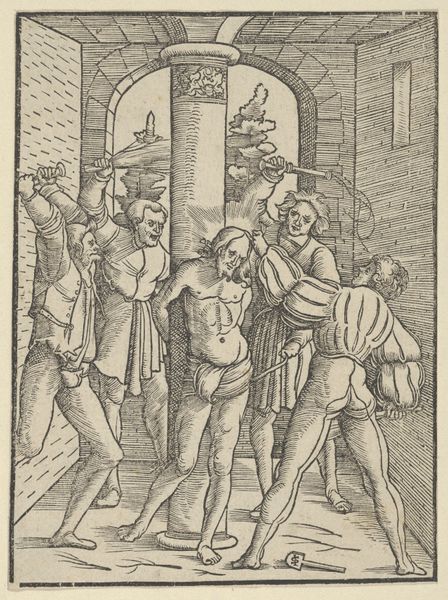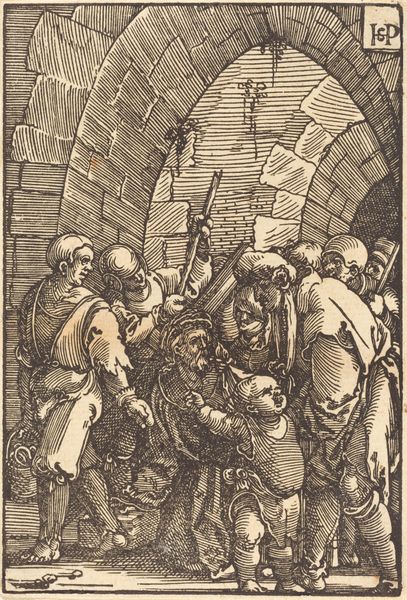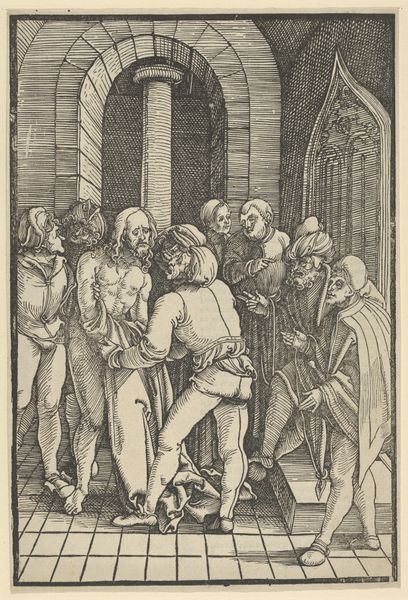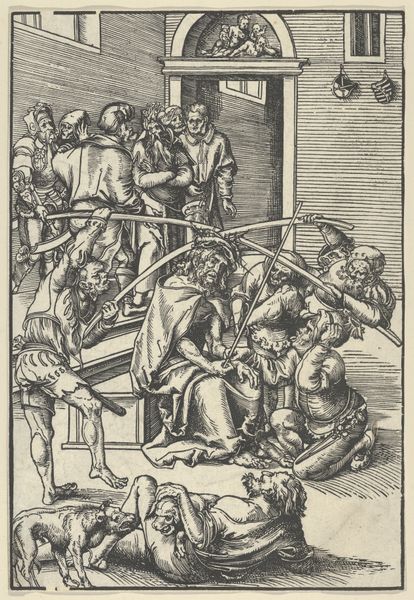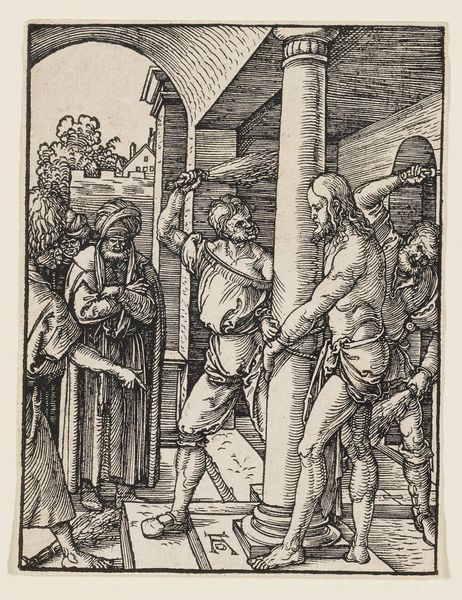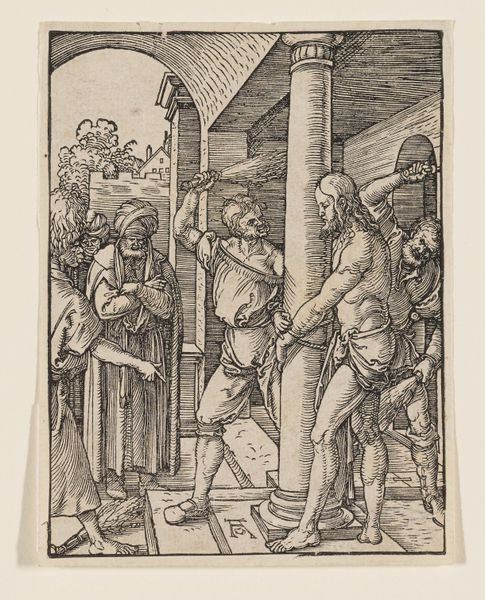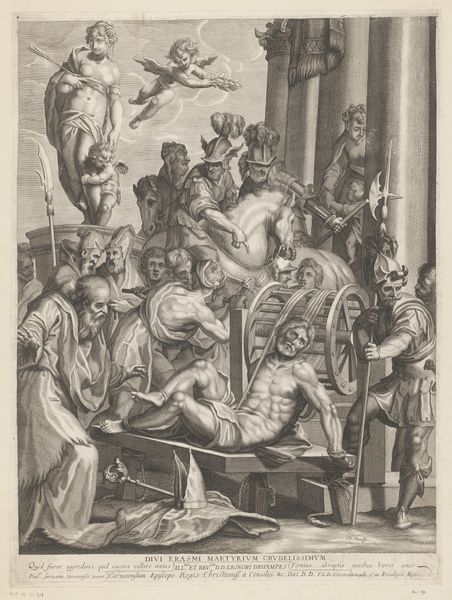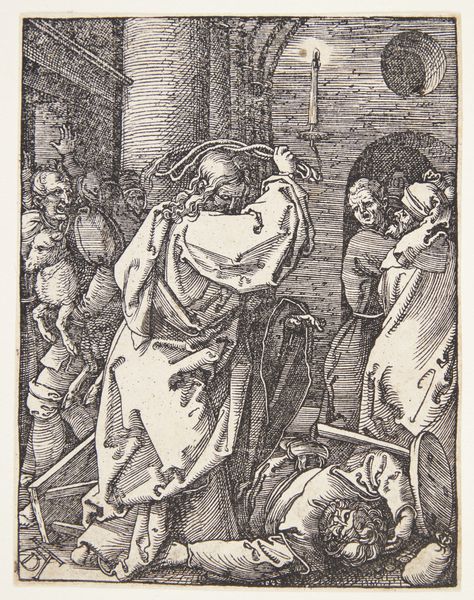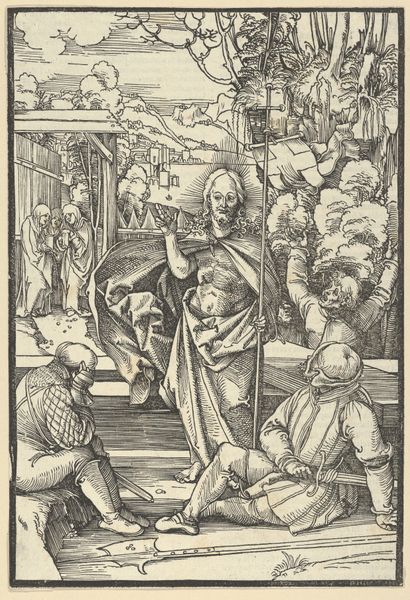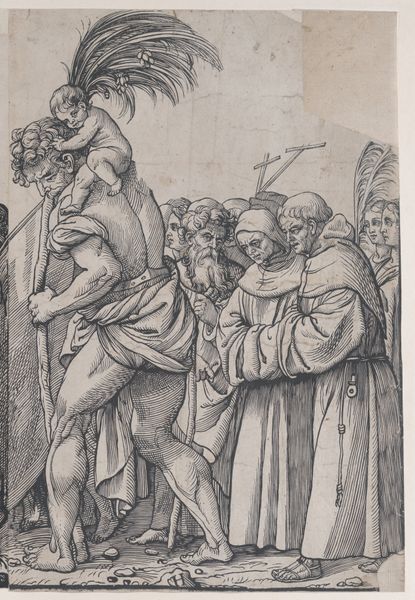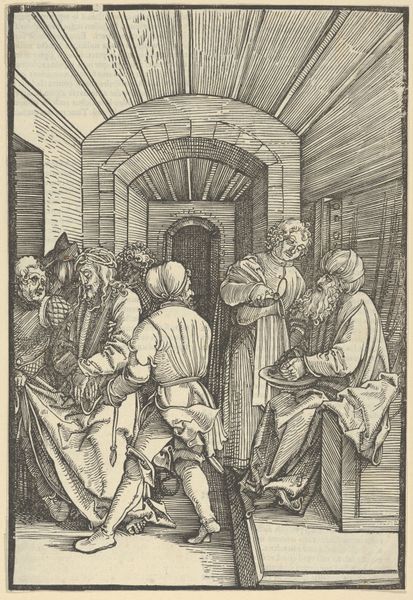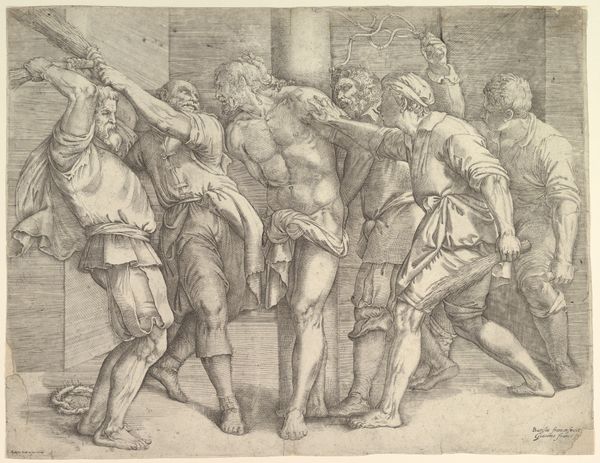
Christ Scourged, from Speculum passionis domini nostri Ihesu Christi 1507
0:00
0:00
drawing, print, woodcut
#
drawing
#
narrative-art
# print
#
figuration
#
woodcut
#
history-painting
#
northern-renaissance
#
christ
Dimensions: Sheet: 9 3/8 × 6 3/8 in. (23.8 × 16.2 cm)
Copyright: Public Domain
Editor: This is "Christ Scourged" by Hans Schäufelein, a woodcut from 1507, part of the "Speculum passionis domini nostri Ihesu Christi." The scene is brutal, obviously. The graphic quality is stark. What can you tell me about its historical context and what it says about the role of art at the time? Curator: Certainly. The piece reflects the intense religious fervor of the early 16th century and the political power that the church held. Prints like these were not simply devotional objects, but powerful tools in shaping public sentiment, reinforcing religious doctrine. Editor: How so? Curator: Consider its circulation. Woodcuts were relatively inexpensive to produce and distribute, making potent imagery accessible to a broad audience. It amplified religious narratives and directed social behaviour within a highly religious culture. Do you notice how the architectural setting seems almost staged? Editor: Now that you mention it, the characters are gathered around, as though in a theatre. Curator: Precisely! The composition turns the scourging into a spectacle. Schäufelein frames it to evoke both piety and guilt in the viewer. Think of it: who controlled access to these images and their interpretation? How did this shape belief and, subsequently, behaviour? Editor: So, it's not just about the suffering of Christ, but about controlling the narrative and wielding that influence through visual means? Curator: Exactly. These weren't passive artworks, but rather actively shaped societal understanding and allegiance to religious authority. Look closely and reflect upon the role imagery still plays today in framing public opinion and discourse. Editor: This makes me view these images as less about solely religious devotion, but much more as pieces of religious political machinery. Thank you. Curator: My pleasure. I found it quite a useful conversation as well.
Comments
No comments
Be the first to comment and join the conversation on the ultimate creative platform.
